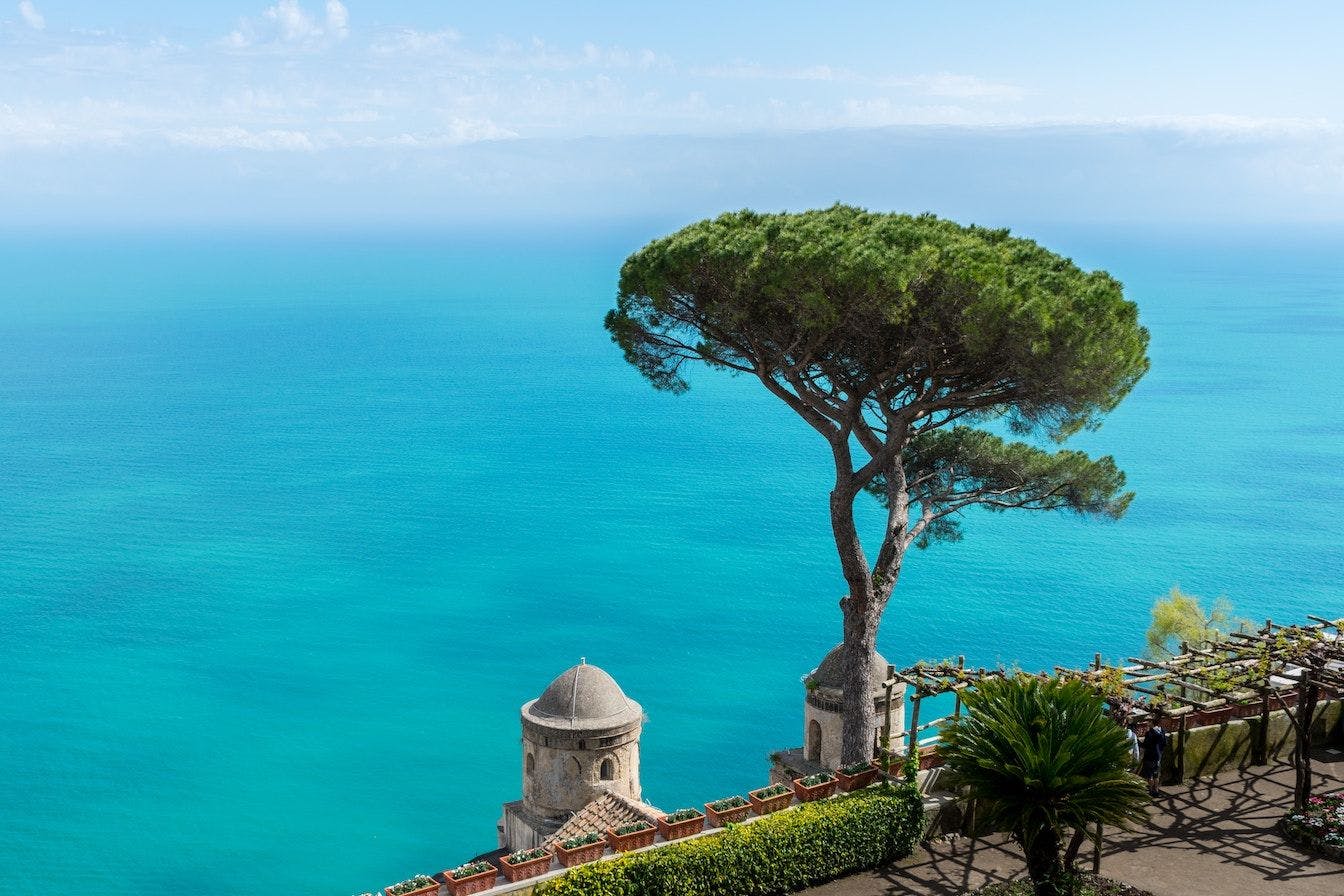
Limoncello: A Taste of Italy's Sun-Kissed Coast
13 min read
Discover the rich history and sun-kissed origins of limoncello, Italy's iconic lemon liqueur. Learn how to make it at home, achieve the perfect taste, and enjoy three refreshing limoncello-based cocktails that showcase its vibrant flavor and embody Italian culture and hospitality.
13 min read
Limoncello, the iconic Italian lemon liqueur, is known for its refreshing taste and vibrant yellow hue. This delightful beverage has a rich history, rooted in Italy's sun-kissed coastal regions, and it has become synonymous with Italian culture and hospitality. In this article, we will explore the origins of limoncello, provide a step-by-step guide to making it, share tips for achieving the perfect taste, and suggest three delicious limoncello-based cocktail recipes to help you savor this delightful liqueur.
The Origins of Limoncello
Limoncello is a traditional Italian liqueur with a rich history and fascinating origin story. Made from the zest of lemons, it is primarily produced in Southern Italy, especially along the Amalfi Coast and the Sorrento Peninsula, where the lemons are famous for their intense flavor and fragrance.
The history of limoncello can be traced back to the early 20th century, though some legends suggest that its origins might date back even further. One popular story claims that limoncello was first created by monks or nuns who used the local lemon zest to create a medicinal tonic. Another story attributes its creation to fishermen and farmers who would consume limoncello as a way to stay warm and fight off colds during the winter months.

The exact origins of limoncello remain uncertain, but it is widely agreed upon that the liqueur became popular in the early 1900s. In the beginning, limoncello was primarily enjoyed as a homemade digestif, made by families using their own secret recipes passed down through generations. It wasn't until the late 20th century that limoncello started to gain commercial popularity, and it has since become a symbol of Italian hospitality.
Where to Buy Limoncello?
You can buy the most authentic limoncello while visiting Italy's Amalfi Coast or at specialty stores offering gourmet Italian products. The lemons used should not only originate from Amalfi but also be organically grown, as their quality and origin are vital to the end product's excellence.
- The lemons used in limoncello production are typically larger and have thicker peels than those found in other regions. The Sorrento lemon (or "sfusato amalfitano") and the Amalfi Coast lemon (or "femminiello") are two popular varieties used for limoncello.
- The island of Capri is said to have its own unique version of limoncello called "Limoncino." It is made using the native "Ovale di Sorrento" lemon variety, which gives the liqueur a distinct taste and aroma.
- In recent years, limoncello has gained international popularity and is now produced and enjoyed in various countries around the world. However, many connoisseurs believe that the best limoncello still comes from the Amalfi Coast and the Sorrento Peninsula, where the tradition originated.
- Limoncello's rich history and unique flavor make it an iconic symbol of Italian culture and a delightful treat to enjoy on its own or as a versatile ingredient in cocktails and desserts.
It's important to keep in mind that lemons from the Amalfi Coast are protected under the Costa d'Amalfi PDO (Protected Designation of Origin), while those from Sorrento are protected under the Sorrento or Sorrentino PDO.
Limoncello produced using lemons from these regions may not have a specific PDO designation for the limoncello itself, but the lemons used in the production should have the PDO designation. This ensures that the lemons are of high quality and authentic to the specific region. When purchasing limoncello, look for indications on the label that the product is made from Amalfi or Sorrento lemons with PDO designation, which will contribute to the overall quality and authenticity of the limoncello.
If sourcing organic lemons or limoncello of the right origin proves to be a challenge, you can always order limoncello from Italy from a shop called Dolce Terra. They specialize in providing high-quality, authentic Italian products, including limoncello. With their help, you can recreate the authentic taste of Italy's beloved limoncello right in your own home.
How to Make Limoncello at Home?
The traditional method of making limoncello at home involves infusing lemon peels in pure alcohol for an extended period, typically ranging from a few days to several weeks. This process extracts the essential oils and flavors from the lemon peels, giving limoncello its characteristic taste and vibrant yellow color.
To make limoncello, you will need the following ingredients:
- 10 organic lemons
- 1 liter (33.8 oz) of high-quality vodka or pure grain alcohol (at least 90 proof)
- 3 cups of granulated sugar
- 4 cups of water
- Begin by carefully washing and drying the lemons. Using a vegetable peeler or a paring knife, remove the lemon zest, avoiding the white pith, which can make the limoncello taste bitter.
- Place the lemon zest in a large glass jar, and pour in the alcohol. Seal the jar tightly, and let the mixture infuse in a cool, dark place for at least 10 days, or up to 40 days for a more intense lemon flavor.
- After the infusion period, prepare a simple syrup by combining the sugar and water in a saucepan. Heat the mixture gently, stirring until the sugar is completely dissolved. Allow the syrup to cool to room temperature.
- Strain the lemon-infused alcohol through a fine-mesh sieve or cheesecloth, discarding the lemon zest. Combine the infused alcohol with the cooled simple syrup, stirring well.
- Bottle the limoncello and store it in the freezer for at least 2 weeks before serving. This will allow the flavors to meld and the limoncello to achieve its characteristic smooth, velvety texture.

Pro Tips:
- Use organic, unwaxed lemons for the best flavor and to avoid pesticides.
- The higher the alcohol content, the more effective the extraction of lemon oils will be.
- The longer the infusion time, the more intense and aromatic the limoncello will become.
Limoncello is traditionally served as a digestif, enjoyed ice-cold in a small chilled glass after a meal. Its sweet, tangy flavor aids digestion and provides a refreshing conclusion to a leisurely Italian dinner.
Making Crema di Limoncello
Crema di limoncello is a delightful variation of traditional limoncello, offering a creamier, smoother texture and taste. It's perfect for those who prefer a slightly less intense citrus flavor. Here's a step-by-step guide on how to make crema di limoncello at home:
Ingredients:
- 6 large organic lemons
- 1 liter (33.8 oz) of whole milk
- 1 liter (33.8 oz) of 95% alcohol or 1.5 liters (50.7 oz) of high-proof vodka
- 1 kg (2.2 lbs) of granulated sugar
- 1 vanilla bean (optional)

Instructions:
- Wash the lemons thoroughly and pat them dry. Using a vegetable peeler or sharp knife, remove the yellow part of the lemon peel, being careful not to include any of the white pith, which can make the liqueur bitter.
- Place the lemon peels in a large glass jar and pour in the alcohol or high-proof vodka. Seal the jar tightly and let it sit in a cool, dark place for at least 10 days, allowing the flavors to infuse.
- After the infusion period, strain the alcohol mixture through a fine sieve or cheesecloth, discarding the lemon peels.
- In a large saucepan, combine the milk, sugar, and vanilla bean (if using). Heat the mixture over low heat, stirring continuously until the sugar has completely dissolved. Remove from heat and let it cool to room temperature.
- Slowly add the strained alcohol to the cooled milk mixture, stirring constantly. The mixture may thicken slightly, which is normal.
- Using a funnel, pour the crema di limoncello into sterilized bottles, leaving some room for expansion. Seal the bottles and refrigerate them for at least one week before consuming. The liqueur will keep for up to 2-3 months in the fridge.
- To serve, pour the crema di limoncello into small, chilled glasses. Enjoy it as a delicious after-dinner treat or use it to create luscious cocktails and desserts.
Remember, homemade crema di limoncello contains dairy, so always store it in the refrigerator and consume it within a few months.
Limoncello Cocktail Recipes
Limoncello Spritz
- 60 ml (2 oz) limoncello
- 90 ml (3 oz) Prosecco
- 30 ml (1 oz) soda water
- Ice
- Lemon slices for garnish
Combine limoncello, Prosecco, and soda water in a glass filled with ice. Stir gently, and garnish with a lemon slice.

Limoncello Ice Cream Martini
- 60 ml (2 oz) limoncello
- 30 ml (1 oz) vodka
- 2 scoops of vanilla ice cream
- 15 ml (1/2 oz) lemon juice
- Lemon zest, for garnish
In a blender, combine the limoncello, vodka, vanilla ice cream, and lemon juice. Blend until smooth and creamy. Prepare a chilled martini glass and garnish with a sprinkle of lemon zest on top for an added burst of citrus flavor.

Limoncello Margarita
- 60 ml (2 oz) tequila
- 30 ml (1 oz) limoncello
- 30 ml (1 oz) fresh lime juice
- 30 ml (1 oz) triple sec or Cointreau
- Ice
- Lime wedge and salt for rimming the glass
Begin by rimming a margarita glass with salt: rub a lime wedge around the rim of the glass, and then dip it into a shallow dish of salt. In a cocktail shaker filled with ice, combine tequila, limoncello, lime juice, and triple sec or Cointreau. Shake vigorously, and strain the mixture into the prepared glass. Garnish with a lime wedge.

Whether you're savoring limoncello as a palate-cleansing digestif after an indulgent meal, refreshing yourself with a zesty cocktail for aperitivo, or incorporating it as a secret ingredient to elevate your favorite dessert, this classic Italian liqueur perfectly encapsulates the essence of Italy's sun-drenched coast and its vibrant, passionate spirit. By embarking on the adventure of making your own limoncello and experimenting with diverse recipes, you can transport yourself and your loved ones to the enchanting world of Italy's La Dolce Vita, and experience the Mediterranean lifestyle right in the comfort of your home. So raise a glass to life's simple pleasures, to the sun-kissed lemons of Italy, and to the timeless charm of limoncello. Salute!
Lizzie Z.
As a top level corporate executive, Lizzie embarked on a soul-searching journey of adventure and slow living, passionately sharing her insights as the founder of RLM.
Topics
Published:
•Updated:
Keep Exploring
Articles we think you will enjoy reading next

Ikaria: The Magical Greek Island That Keeps People Healthy And Young
Island of Ikaria has garnered global attention for being a Blue Zone - a region with an exceptionally high number of centenarians and an impressively healthy population.
Lizzie
•11 min read

The Enchanting Island of Capri: Beauty, Luxury, and Timeless Allure
Embark on an adventure with Isabella as she guides you through the island of Capri. From luxurious villas to lush lemon trees and scenic streets with stunning views of the Mediterranean Sea, Capri is a destination that will take your breath away.
Isabella & Lizzie
•11 min read

Alluring Amalfi: The Ultimate Guide to Italy's Most Glamorous Coastal Escape
Discover the Amalfi Coast's allure with our guide to its iconic destinations, from Positano to Ravello, and explore its unique Mediterranean charm.
Lizzie
•6 min read









